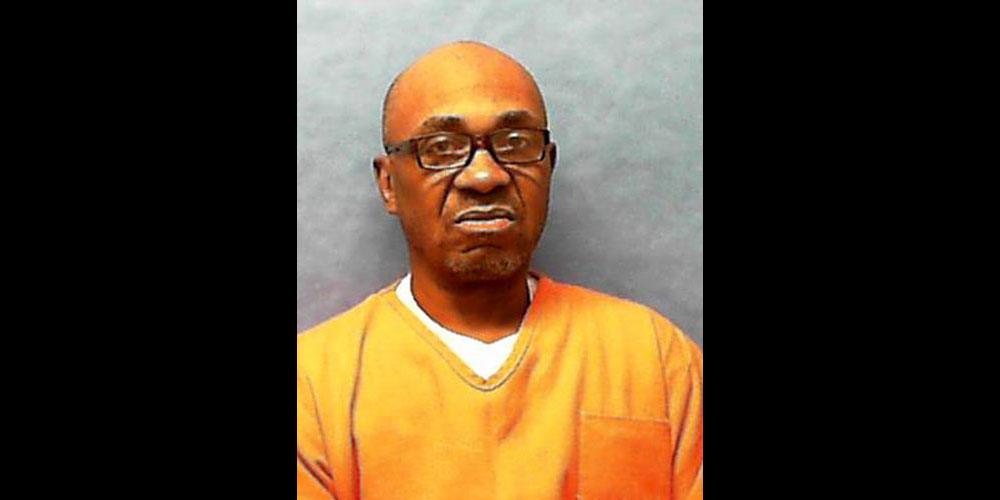
In what could be Florida’s 17th execution this year, Gov. Ron DeSantis on Tuesday signed a death warrant for a man convicted of raping and murdering a Putnam County convenience-store manager in 1988.
[The 17 death warrants are more than the number of executions in six states combined, including Texas, which has the second-most executions so far this year, with fivem and Alabama, third-most with four.]
Richard Barry Randolph, 63, is scheduled to be executed Nov. 20 for the murder of Minnie Ruth McCollum, who was beaten, stabbed and raped at a Handy Way store in East Palatka. Randolph was a former employee of the store, and McCollum interrupted him as he tried to steal money or lottery tickets, according to a 1989 sentencing order issued by then-Circuit Judge Robert Perry.
“When Minnie Ruth McCollum interrupted the defendant in the process of stealing from the store, he brutally beat her about the head with his hands and fists, kicked her, strangled her with a ligature and stabbed her with a knife, inflicting wounds which medical evidence showed caused her death on August 21, 1988,” Perry wrote. “The defendant went back to the victim on four or five separate occasions while trying to murder her. His statements reflect that she was much tougher than he thought and that he had to repeat the beatings and/or strangulations.”
Randolph took McCollum’s car and cashed stolen lottery tickets elsewhere, according to the sentencing order.
If the death warrant is carried out, it would add to a record for executions in a year in Florida — and could continue a recent pace of two executions a month. DeSantis on Oct. 10 signed a death warrant for Bryan Frederick Jennings, 66, to be executed Nov. 13 in the 1979 kidnapping, rape and murder of a 6-year-old girl in Brevard County.
The state on Oct. 28 is scheduled to execute Norman Grim, 65, in the 1998 murder of a Santa Rosa County woman. Samuel Smithers, 72, was put to death by lethal injection Oct. 14 in the 1996 murders of two women in Hillsborough County.
Florida also carried out two executions in May, two in June, two in July, two in August and two in September.
DeSantis has said little publicly about the rapid pace of executions, but the previous modern-era record in a year was eight in 1984 and 2014. The modern era represents the time since the death penalty was reinstated in 1976, after a 1972 U.S. Supreme Court ruling halted it.
Typically, the signing of a death warrant begins a flurry of legal activity about whether the execution should be carried out.
In addition to Smithers, inmates executed this year were Victor Jones on Sept. 30; David Pittman on Sept. 17; Curtis Windom on Aug. 28; Kayle Bates on Aug. 19; Edward Zakrzewski on July 31; Michael Bell on July 15; Thomas Gudinas on June 24; Anthony Wainwright on June 10; Glen Rogers on May 15; Jeffrey Hutchinson on May 1; Michael Tanzi on April 8; Edward James on March 20; and James Ford on Feb. 13.
–Jim Saunders, News Service of Florida






























Deborah Coffey says
A true Fascist like Trump, he just can’t kill fast enough. At least we believe these people received due process of law and are guilty. Still, what so many Americans have chosen to put in office is heartbreaking.
Bo Peep says
Awesome Ron! Keep up the good work.
R.S. says
I suspect our governor is sick in the head: judicial killings make no sense; otherwise, death penalty states should have fewer crimes than states without death penalty. But here’s the answer from an AI research of the Internet: States with the death penalty generally have higher murder rates compared to those without it. Studies indicate that the murder rate in non-death penalty states has remained consistently lower than in states with the death penalty, with a significant increase in murder rates among states with the death penalty over the past decade. Additionally, while some states with the death penalty may have lower murder rates compared to their pre-2015 rates, the overall trend shows that states without the death penalty tend to have lower crime rates. Therefore, evidence suggests that the presence of the death penalty is not an effective deterrent to crime.
I suspect that the biggest bully principle is affirmed by the state with the death penalty, the state being the biggest bully. It’s obviously counterproductive. I don’t know what the governor has in his head, but it sure ain’t brains. Instead of trying to put to death people who don’t want to die and are in secure institutions, the state should focus on old people willing to die and permit assisted dying.
Land of no turn signals says says
Set ’em up knock them down.
Kyoshin says
Good it only took 30 something years at least justice is being served
Lebuc says
Great job Ron! You may yet earn the approval of your Political Dad.
Now let’s have a picture of the other 16 murderers, or are you trying to set a particular tone here?